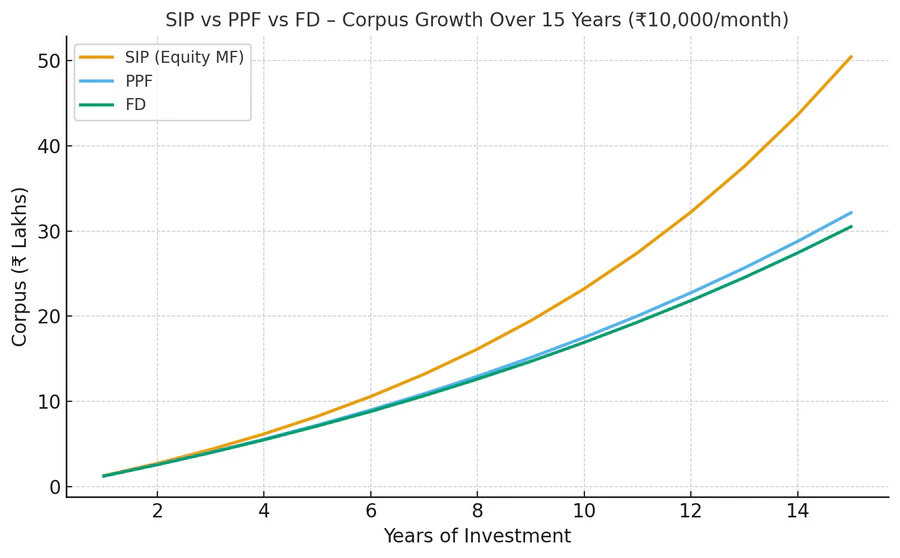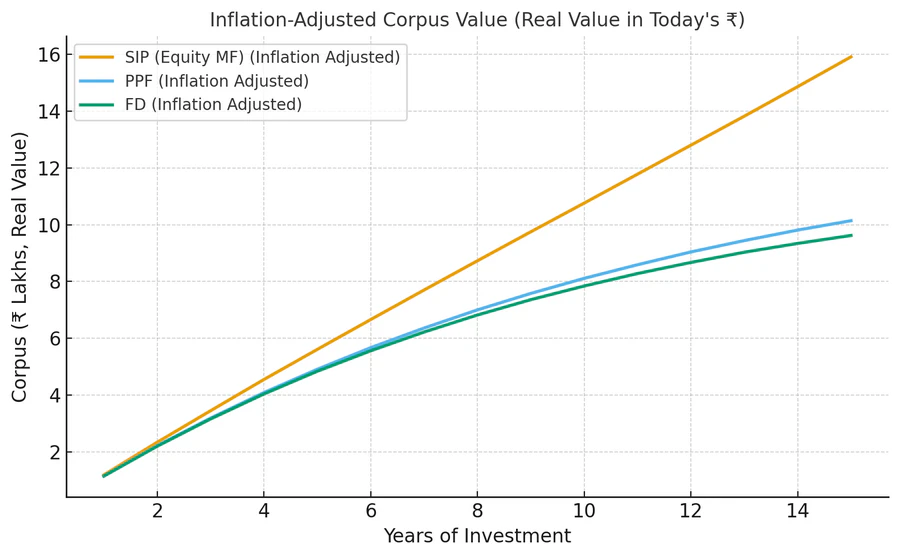Investing for Your Child’s Education: SIP or Other Options?
Providing your child with quality education is one of the biggest financial goals for any parent. But with education costs rising 8–10% annually, traditional savings like bank deposits or PPF may not keep up.
A Systematic Investment Plan (SIP) in mutual funds offers a smarter, inflation-beating way to build the required corpus over time. Here’s a comparison between SIPs, PPF, and FDs — and how to plan effectively.
Understanding the Goal: Rising Cost of Education
Education inflation in India is among the highest globally.
A program costing ₹20 lakh today could cost ₹40–50 lakh in 10–12 years.
To meet this goal, you need investments that outpace inflation, not just preserve capital.
Option 1: SIP in Mutual Funds
A Systematic Investment Plan (SIP) allows you to invest a fixed amount regularly in a mutual fund scheme. Equity SIPs, in particular, are ideal for long-term goals like education.
Benefits of SIP for Child Education
- Beats inflation: Historical equity mutual fund returns average 10–12% p.a.
- Flexibility: Start with ₹500/month and increase gradually (Step-Up SIP).
- Liquidity: Redeem partially or fully when the goal nears.
- Compounding: Early investors benefit most.
Example:
A SIP of ₹10,000/month for 15 years at 12% returns can grow to ₹50 lakh+, sufficient for higher education goals.
Option 2: Public Provident Fund (PPF)
PPF is a safe, government-backed investment with a 15-year lock-in and current interest rate of 7.1% p.a.
Pros:
- Guaranteed returns.
- Tax-free maturity.
- Eligible under Section 80C.
Cons:
- Lower returns compared to inflation.
- Limited liquidity.
PPF is reliable but may fall short of education inflation unless combined with growth-oriented investments.
Option 3: Fixed Deposits (FDs)
Bank FDs offer safety and predictable returns (6–7%), but they are not ideal for long-term goals due to taxation and inflation erosion.
Pros:
- Safe and easy to manage.
- Flexible tenures.
Cons:
- Interest is taxable.
- No inflation protection.
- Poor compounding effect.
FDs work better for short-term goals, such as fees due within 1–3 years.
SIP vs PPF vs FD – Comparison Table
| Feature | SIP (Mutual Funds) | PPF | Fixed Deposit |
|---|---|---|---|
| Expected Returns | 10–12% | 7.1% | 6–7% |
| Inflation Protection | Yes | Partial | No |
| Risk Level | Moderate | Low | Low |
| Liquidity | Flexible | 15-year lock-in | Moderate |
| Tax Benefit (80C) | Yes (ELSS) | Yes | Yes (5-year FD) |
| Best For | Long-term goals (10–15 yrs) | Long-term safety | Short-term parking |
Chart 1: Corpus Growth Over 15 Years


Chart 2: Inflation-Adjusted Value (Real Corpus in Today’s ₹)

Planning Timeline and Inflation Adjustment
Example:
- Current cost: ₹15 lakh
- Inflation: 8%
- Time horizon: 15 years
- Future cost: ₹47 lakh
To reach ₹47 lakh in 15 years (at 12% returns), invest about ₹8,500/month.
Delaying by 5 years doubles the required SIP to ₹17,000/month — proving the importance of starting early.
Check out CapitaGrow Investment Calculators to calculate exact amount.
Smart Strategy: Combine Growth and Safety
For a balanced plan:
- Use Equity SIPs for long-term growth.
- Use PPF or Debt Funds for stability.
- Shift gradually from equity to debt 3–4 years before goal.
This ensures both wealth creation and capital protection.
Key Takeaways
- Start early; let compounding work over time.
- Combine SIPs with safer assets for balance.
- Increase SIPs annually with income growth.
- Avoid relying solely on fixed-return instruments.
Plan your child’s education fund smartly with goal-based SIPs on CapitaGrow.com.




